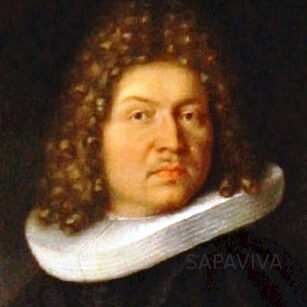(January 6, 1655 – August 16, 1705)
Jakob was the math-patriarch of the Bernoullis: a Swiss family which awed Europe with generations of brilliant mathematicians. He tutored his younger brother, Johann, thereby initiating what I have termed: “The Bernoulli Mathematical Dynasty”. And despite later disputes with Johann, (which were mostly instigated and exacerbated by Johann), the family dominated European mathematics for decades. Jakob reigned supreme in Statistics. But that did not stop him from excelling in Calculus, Algebra, Geometry, Number Theory and Applied Mathematics. He realized—prior to most scholars—what a powerful tool Calculus was. This induced him to research Leibniz’s works. And by so doing, he developed various integral and differential methodologies. His mastery of calculus proved crucial during the “precedence squabbles” between its co-inventors: Isaac Newton and Gottfried Leibniz. Bernoulli supported Leibniz due to his better abstraction and elaboration of the subject. Also mindful of Robert Hooke’s works on Catenary curve problems and Christiaan Huygens’ geometrical proof that Tautochrone curves are cycloid; he built on that by using calculus to solve the related problem of Brachistochrone curve. Admired all over Europe, his novelties in Probability, Polynomials, etc., led to him being the eponym of several concepts and theorems. He also left indelible marks on Infinite Series; and received praises for discovering the Constant e, as well as for reinventing the Polar Coordinates. These blueprints provided his successors with prime pathways for charting future courses. Jakob Bernoulli remained a class act even in death. After his demise in 1705 his epitaph read: Mathematicus Incomparabilis.
All rights reserved. © Valentine Oduenyi


I like your blog, your posts and their interesting contents.
Thank you for this marvellous post, I’m glad I discovered this web site on yahoo.
He and his brother were the best mathematicians of their time.
Great genius
I never stop wondering who among them is the greatest Bernoulli.
I’m a fan of this blog. Big thanks for your efforts!
I think he is the greatest Bernoulli anyways.
What a family!
Impressed with this site …
Each page brings fresh excitement.
Bravo to the first who made the Bernoulli name famous. 😉
Is there anything like a math gene?
Does it run in families?
This is a topic close to my heart.
Cheers to Sapaviva for delivering it!
Where are your contact details though?
Highly commendable
I am impressed with your writing talents as much as I am with the achievements of these geniuses.
Simply amazing
Classic
Hey! This is great!
The site is excellent.
Transforming learning and leveraging global connectivity
Family brains at crossroads!
Hats-off to the great founder of great generations!